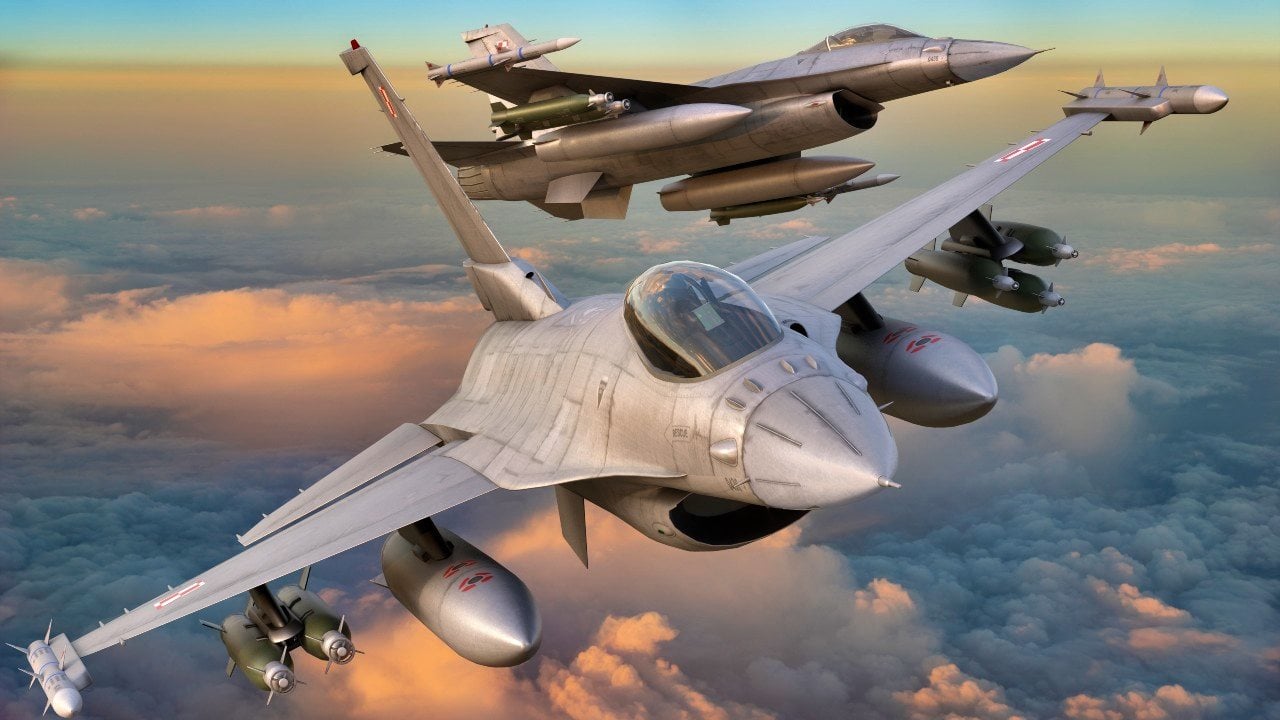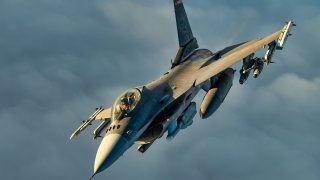Video Shows Taiwan F-16 'Locked' On Chinese J-15 With U.S.-Made 'Sniper Pod'
A Taiwanese F-16V recently locked onto a Chinese J-15 fighter during the "Joint Sword-2024B" exercises near Taiwan, showcasing the advanced capabilities of Taiwan's upgraded air force.
What You Need to Know: A Taiwanese F-16V recently locked onto a Chinese J-15 fighter during the "Joint Sword-2024B" exercises near Taiwan, showcasing the advanced capabilities of Taiwan's upgraded air force.

-The encounter, tracked by the F-16's Sniper ATP, demonstrated Taiwan's growing air defense prowess amid heightened tensions with China.
-The J-15, armed with various missiles and bombs, is a formidable opponent, but Taiwan is bolstering its fleet with 66 new F-16Vs as part of an $8 billion deal.
-These modernized F-16s, equipped with cutting-edge radar and targeting systems, significantly enhance Taiwan's air defense capabilities.
Taiwan's F-16V Locks on to Chinese J-15 Fighter: A Close Call in the Skies
Though not confirmed, it increasingly seems that a Ukrainian-piloted F-16 Fighting Falcon downed a Russian Aerospace Force's Sukhoi Su-34 (NATO reporting name Fullback) fighter bomber this past weekend. Now comes news that an F-16 flown by the Taiwanese Air Force could have just as easily taken out a Chinese Shenyang J-15 Flying Shark (NATO reporting name Flanker-X2).
The Taiwanese-based Military News Agency shared a short video on social media that was recorded by the F-16V's Sniper ATP (Advanced Targeting Pod) in its thermal mode. The ATP was able to monitor and track the movements of the carrier-based Chinese fighter in real-time. Though it appears that the aircraft was tracked for just 18 seconds in length, it would have been long enough for the F-16 to engage and shoot down the Chinese J-15 fighter.
The J-15 – based on the Russian Sukhoi Su-33 (NATO reporting name Flanker-D) – was operating from the CNS Type 001 Liaoning aircraft carrier during the recent "Joint Sword-2024B" exercises around the self-ruling island of Taiwan. The aircraft entered Taiwan's Air Defense Identification Zone (ADIZ) when the Republic of China Air Force (RoCAF) F-16V was deployed to intercept.
The RoCAF pilot employed the Sniper ATP, developed by aerospace and defense giant Lockheed Martin, to lock onto to the J-15.
In an actual conflict, the F-16V's pilot wouldn't want to spend 18 seconds thinking about shooting down the J-15. As reported by Brandon J. Weichert for The National Interest, the Flying Shark is a true apex predator.
"The J-15 is equipped with a wide array of weapons. These include air-to-air missiles, air-to-surface missiles, and precision-guided munitions. The 'Flying Shark' can carry up to 12,000 kg of external stores, including short-range PL-8 and PL-12 air-to-air missiles, YJ-83K anti-ship missiles, and various bombs and rockets. The J-15 also features a 30 mm cannon for close-range engagements," wrote Weichert.
Taiwanese Air Power
Taipei has sought to increase its air capabilities, and it is on track to receive an additional sixty-six F-16V aircraft – part of a 2019 deal valued at approximately $8 billion. In addition, Taiwan has been upgrading its fleet of 141 F-16A/B models to the F-16V standard.
In total, the RoCAF will have more than 200 of the advanced all-weather multirole combat aircraft in service in the coming years. Upgraded with Active Electronically-Scanned Array (AESA) radar, Sniper targeting pod, Link 16 network connecting software, and precision GPS navigation, the new F-16s also have one-third more service life than previous versions of the Fighting Falcon.
In addition to the F-16s, the RoCAF also operates a sizeable number of F-5 Tiger, Dassault Mirage 2000D, and F-CK-1 Ching-Kuo fighters. While the Tigers are showing their age, those old cats will be replaced in the coming months and years by the far more capable Vipers.
Author Experience and Expertise: Peter Suciu
Peter Suciu is a Michigan-based writer. He has contributed to more than four dozen magazines, newspapers, and websites with over 3,200 published pieces over a twenty-year career in journalism. He regularly writes about military hardware, firearms history, cybersecurity, politics, and international affairs. Peter is also a Contributing Writer for Forbes and Clearance Jobs. You can follow him on Twitter: @PeterSuciu. You can email the author: [email protected].
Image Credit: Creative Commons and/or Shutterstock.


